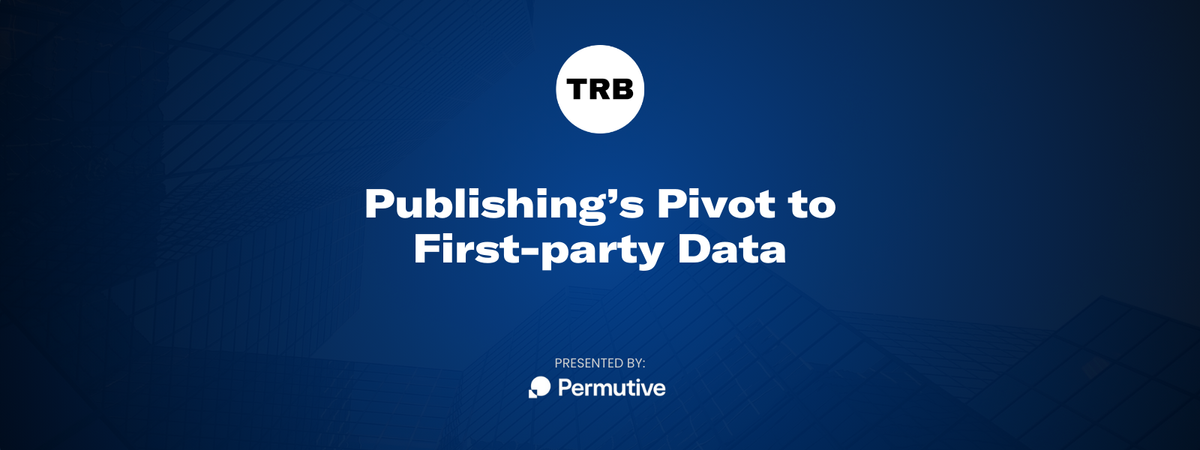Publishing’s pivot to first-party data
Overcoming fragmentation of signals

As publishers shift toward first-party data strategies, they are positioning themselves to meet advertisers’ growing need for direct, privacy-safe audience insights. The Rebooting, in partnership with Permutive, surveyed 38 publishers to examine how they are adapting to the first-party data landscape. Regardless of third-party cookie developments, publishers have committed to investing heavily in first-party data as a foundation for future advertising success.
By leveraging first-party signals, publishers can now deliver critical insights into their audience’s demographics, locations, and behaviors on their platforms—data that is increasingly valuable to advertisers seeking precise, relevant targeting. This pivot enables publishers to highlight the unique reach and depth of their audiences, appealing to buyers who want more control and confidence in where their ads are shown.
However, the path for publishers is challenging, as they face obstacles in identifying audiences and connecting fragmented solutions to manage and activate audience signals effectively.
“The problem is that they have to deal with an increasingly fragmented set of solutions to (1) manage these signals and (2) make those signals available for collaboration, curation and, ultimately, activation,” Root says. “Publishers should look for a solution that unifies these signals and integrates them into the ecosystem for activation, collaboration, and curation.”
The Rebooting surveyed 38 publishers to better understand their first-party data strategies. Overall, publishers told us they on average saw 37% of their audiences are identifiable. Still, many publishers struggle even more with getting to that level. Over half of respondents said they have identity data on less than 25% of their audiences.
“The viability of the Open Internet is a challenge because the Demand-Side Platforms that make purchasing decisions don’t work without a cookie,” Root says. “For publishers, 70% of their inventory is under-monetised because no cookies exist. For advertisers, they are only able to bid on 30% of consumers, meaning reach has collapsed and CPMs have increased.
When it comes to the pressures publishers see in the marketplace, unidentified audiences is still an emerging issue, as publishers are still squarely focused on competition from other publishers but more so on competition from tech platforms.
There is, of course, overlap on this issue. Content publishers are listing out on ad deals in large part because they lack the scale and vast stores of first-party data that tech platforms offer to advertisers.
Publisher first-party signals solve this problem—they enable publishers' CPMs to grow by over 90%, and enable advertisers to reach 100% of consumers, and downstream of that sales double and CPAs halve, making the open internet perform higher, Root adds.
So publishers must continue to beat the drum on the value and importance of their first-party signals, both with advertisers and ad tech companies.
Publishers need to connect the depth of their audience reach. (Detailing the impact and insights associated with publishers’ reach is Permutive’s pitch to those content owners seeking a better deal with ad tech players, particularly supply-side platforms that aim to represent publishers within programmatic marketplaces.)
“[The right pitch for publishers] means stocking their shelves with your signals and partnering with them to drive adoption with advertisers, and agencies in particular,” Root says.
In terms of the proof being realized by publishers already, first-party data has driven enormous growth for publishers within their own direct-sold environments—eCPMs are typically 30-50% higher, according to Root, and the growth in audience driven campaigns is greater than 20% year-over-year, an impressive figure considering the softness publishers have been experiencing due to declining referral traffic from search and social media.
“Historically, the challenge for first-party signals has been that the programmatic pipes haven't supported them, and there haven't been the connections with advertisers to enable them to safely collaborate on top of those signals.” Root says.
The sheer diversity of options with significant traction – and 16% already using curation, a key theme emerging in ad tech circles – indicates that publishers are choosing an “all of above” approach to solving for identity.
Root notes the SSPs' curation platforms now allow publishers to stock their shelves with first-party signals for programmatic activation. Secondly, he points to the rise of native clean room environments in the data cloud warehouses run by the likes of Snowflake and others which enable faster sharing of audience analytics.
“With these tools, publishers can eliminate data silos, improve match rates, and collaborate more effectively with advertisers,” Root says. “To give you an example, our publishers can curate and integrate their signals into the bid stream through all the major SSPs for activation, and we’re making those same signals available in clean room environments like Snowflake.”
The demand for first-party signals is very strong/strong, as the Rebooting survey results show in the chart below. But publishers' competition has morphed away from each other and the walled gardens, and instead we've seen the rise of ad-tech companies who repackage publisher signals, and find cheaper paths to their inventory, to compete with publishers, Root contends.
“Publishers must consistently emphasize the value and importance of their first-party signals to advertisers,” Root says. “The most effective approach is to illustrate the problem: Our platform's reachability reports highlight the loss in reach due to cookie deprecation and the potential growth from utilizing publisher first-party signals. That’s one way of educating advertisers, and agencies.’”



